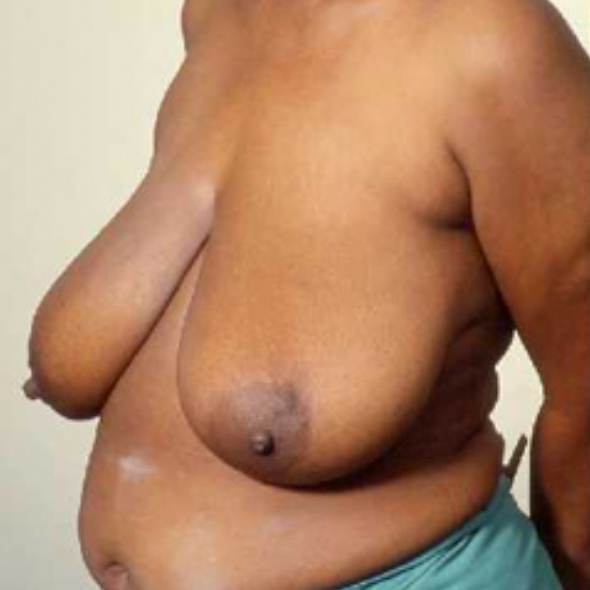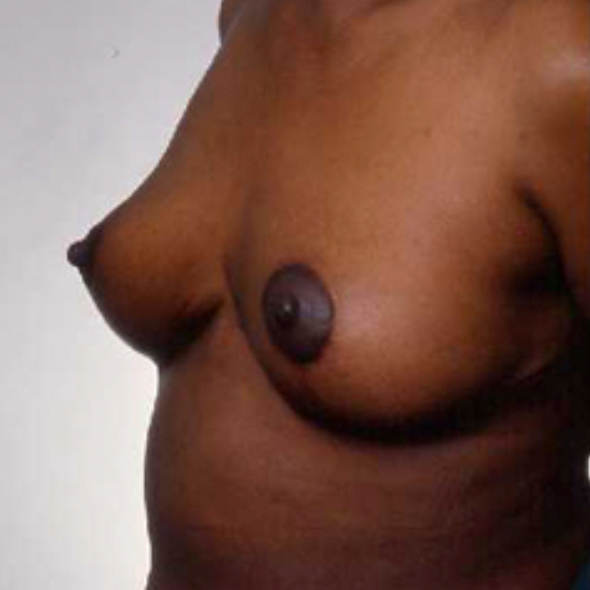Navigation
Breast Reduction in Newport Beach
If you feel that your breasts are disproportionately large for your body or they cause chronic pain, breast reduction surgery may be able to help. Removing excess breast tissue and improving the shape of your bustline can provide you with newfound comfort and happiness with your physique. Dr. Ip will guide you through the breast reduction process to ensure your new breasts create a balanced and beautiful look.
The Benefits of Breast Reduction
Ideal breast size is dependent on personal preference. Women with smaller frames may desire smaller breasts to create a more balanced appearance. If you have significantly large breasts, even with a more traditional frame, decreasing their size may help you look better and feel more confident in your body.
Cumbersome breasts can also lose their shape and attractive definition. During your breast reduction, we remove and reshape the breast tissue to create a pleasing and natural-looking bust. Improved breast shape can allow you to feel more self-confident in more adventurous types of clothing.
The most significant problem women with large breasts face is the chronic neck and back pain caused by the excess weight. By lightening the weight of the breasts, you significantly relieve pressure from the spine, which can provide long-lasting relief from pain. You may be able to perform physical activities that previously felt impossible due to body aches and pains.
Dr. Ip Will Guide You
through the decision-making process so that you can achieve the look you love.
Customize Your Breast Reduction
Incision
- An anchor incision will be placed around the areola, vertically down the lower breast tissue, and across the breast crease.
- This incision placement allows for the best removal of excess breast tissue and fat.
- Through an anchor incision, lifting techniques can be used to improve the appearance of your breasts.
Reshaping
- Excess fat is removed from the breasts through either direct excision or liposuction.
- Unnecessary folds of skin are removed to decrease the size of the breasts.
- The remaining tissue is lifted on the chest to provide a more pleasing and youthful breast position.
- Breast shape is improved to create a perky and defined look.
Liposuction
- Liposuction may be a good breast reduction option for women with large breasts.
- Liposuction candidates should have minimal breast droop and good skin tone.
- Liposuction achieves a smaller breast size without the scars associated with a formal breast reduction.
Areola Resizing
- A poorly positioned nipple-areola complex is common in women with larger breasts.
- When possible, the areola is left attached to the breast tissue and repositioned during the reduction process.
- If you feel that your areolas are too large, they may be resized during the repositioning process for a perky, more natural aesthetic.
Recovery
Immediately following your surgery, you will experience bruising and swelling around your breasts. A specialty compression garment should be worn to help minimize excess swelling. It is important to carefully follow your postoperative instructions to ensure quality healing and the best results possible.
Diet is an important factor in your healing process. It is necessary that you provide your body with the essential vitamins and nutrients it needs to heal following your surgery. Your diet should consist of protein, healthy fats, vegetables, and fruits. However, a diet of soft foods may be best immediately following your surgery because of the side effects of the general anesthesia. A detailed list of healthy, nutrient-packed foods will be provided for you before your surgery.
Patients will be required to limit their physical activities following their procedure. You will need to rest for several days after surgery. Most patients return to work two weeks after their procedure. You can resume your regular exercise routine sometime between four and six weeks post-surgery. You shouldn’t smoke for at least six weeks following your procedure.
You will be prescribed medications to take on a routine basis following your surgery. KEFLEX® and CIPRO® (ciprofloxacin) are antibiotics used to prevent infection. Flexeril™ and Valium® are muscle relaxers used to reduce discomfort. Pain medication may also be used to relieve any additional discomfort you may feel during your recovery.


Frequently Asked Questions
A: Patients preparing for a breast reduction should quit smoking six weeks prior to their surgery. You shouldn’t take any blood-thinning medications for two weeks prior to your procedure. Eat a healthy diet with plenty of nutrients. Do not eat after midnight the day of your surgery.
A: Breast reduction surgery is performed using a local and intravenous anesthetic. This is to ensure patient comfort and safety during the procedure.
A: Breast reduction surgery is an outpatient procedure and takes two hours to perform.
A: Women with larger breasts tend to also have issues with sagging. During your reduction, lifting techniques may be used to provide a perkier, more youthful breast appearance.
A: You will provide Dr. Ip with your health history, inform him of any medications or supplements you are taking, and tell him the results you expect from your procedure. Dr. Ip will assess your anatomy and provide recommendations as to what will work best with your frame, your existing breast tissue, your skin elasticity, and the results you desire to give you the ultimate outcome.
A: After surgery, you may immediately feel lighter around your chest, but swelling can cause your breasts to still feel weighty. Once you are fully healed, you should experience a relief from your breast weight that lasts for years. However, additional weight gain following a breast reduction can cause your breasts to increase in size.








